3D Printed Masks
Members of the Department of Physics and Astronomy in the Center for Emerging Energy Sciences (CEES) have been investigating personal protective equipment (PPE) solutions. In extraordinarily high demand are N95 masks, which has lead to global shortages of this critical gear. While working remotely, a group of scientists and engineers has been developing 3D printed masks with filter inserts made from typical HVAC filters. Currently, three prototypes have been tested by physicians and researchers at the Health Sciences Center (HSC) and with their expert feedback, another three have been prepared and submitted for assessment.
Background
Several digital prototype designs for a reusable, printable mask have surfaced in recent weeks. Our group researched possible designs, such as the one below.

Image source link: #HackThePandemic
After printing a few examples to check for consistency, the next step was to investigate how to make a printed mask into true PPE. There are three main factors that needed to be considered:
-
Porosity of the printed material
-
Porosity of the filter material
-
Interface between mask and face to create an adequate seal
Materials and Design
Mask Properties
The 3D printers available to the Center are not medical grade, and therefore, the printed material risks having high porosity. For clarity, the diameter of the SARS-CoV-2 form a.k.a. novel coronavirus is between 60 - 140 nm (Cascella et al, 2020). Therefore, the mask component does provide a rigid structure but must also be impenetrable to nano-particulate.
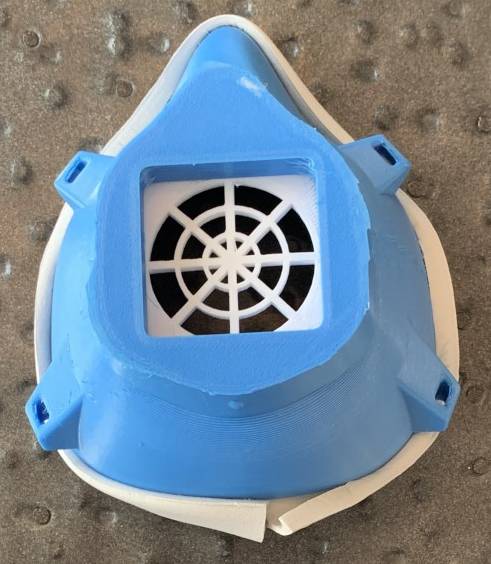
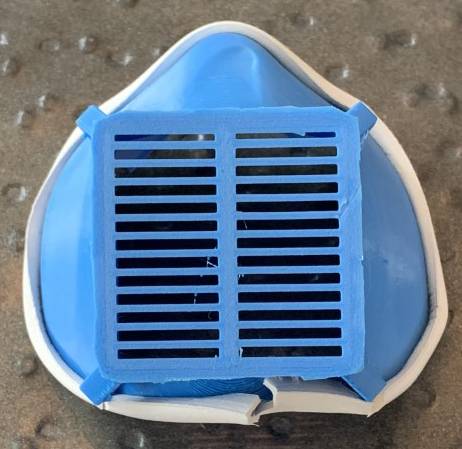
The group is currently uses two material options, PLA and TPU, and it was found that both act as total particulate barriers as long as the printer head provides sub-millimeter detail. Additionally, the surface of the plastic can be heated to remelt and smooth it, thereby eliminating surface porisity.
Filter Properties
The N95 masks are 95% efficient in filtering particulate 100 - 300 nm in diameter and 99.5% efficient filtering 750 nm particulate and larger (Qian et al, 1998). There are, however, much more common filter types that are also very effective at filtration, namely HVAC filters. For example, HEPA filters are 99.97% efficient at trapping 300 nm particulate (Quality assurance, 2007) and a home HVAC filter rated MERV 13 is 50% efficient at filtering particulate of the same size (Understanding MERV, 2020). The material currently being tested are three stacked layers of MERV 13 wherein the first filter layer is glued to the mask with subsequent layers glued on top of that (below).
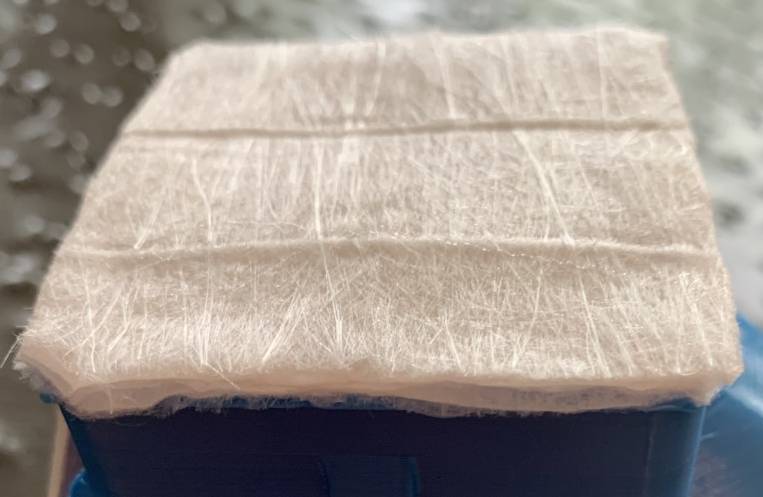
This assembly was tested and showed promising results in particulate capture. For more information, visit the PROTOTYPE DESIGNS section of this site.
HEPA filters, as previously mentioned, provide superior particulate filtration efficiency, but they typically have a more rigid construction that makes for disassembly and placement into a mask more difficult. A prototype filter assembly was developed (below) and is currently being tested.
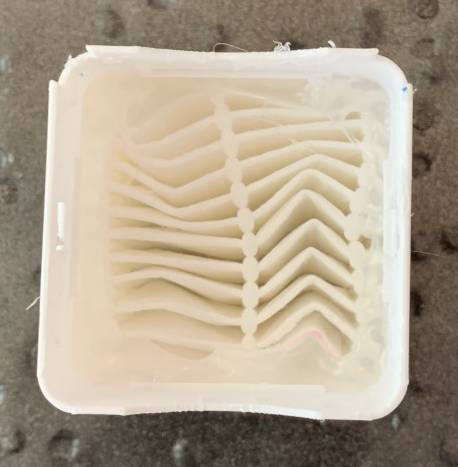
Mask/Face Seal
It is imperative that the mask form a tight seal with the face to ensure that the only path for air flow is through the HVAC filter. In order to accomplish this, a more ductile material must be attached to the edge of mask. Several options were investigated for malleability, simplicity, and availability. Thus far, the most suitable choice is a common window seal strip. The rubberized foam is cut and glued in place around the edge of the mask and another strip can be attached to the nose-bridge portion for additional comfort and security (below).
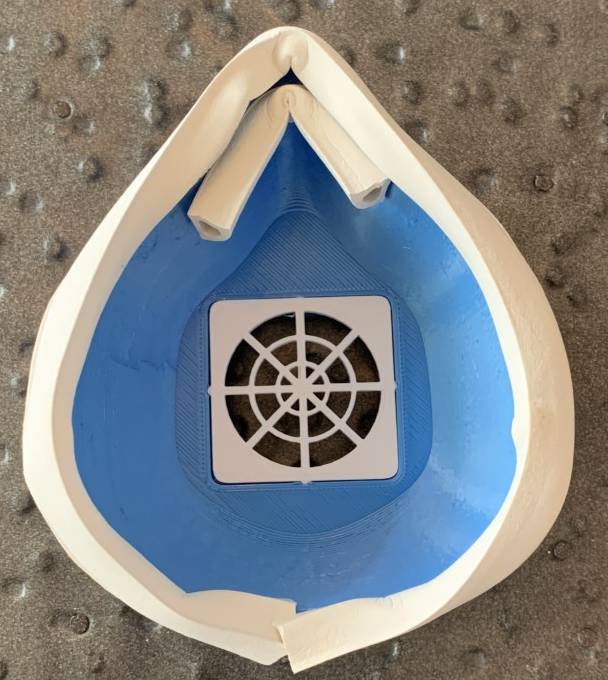

The foam strip can be removed and replaced with a fresh strip after each use, while sterilization techniques are being investigated to learn if it can indeed occur and if the material is damaged during the process.
Donations
CEES has donated four N95 masks, 33 boxes of gloves, and 29 protective goggles. These items were delivered to the Innovation Hub as part of the request from TTU that research facilities donate available PPE.
Learn More
Instructional Videos
Prototype Designs
MERV 13 Filter
HEPA Filter
Face Shields
Materials Sterilization
R&D Team
References
TTU Resources and Support
Coronovirus Emergency Communications Center
Student Affairs - COVID19
Department of Physics and Astronomy
-
Address
Texas Tech University, Department of Physics & Astronomy, Box 41051, Lubbock, TX 79409-1051 -
Phone
806.742.3767 | Fax: 806.742.1182 -
Email
physics.astronomy.webmasters@ttu.edu | physics.academic.advising@ttu.edu
